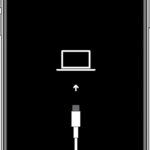Ktuner and Hondata are two popular tuning platforms for 10th generation Honda vehicles. While both offer performance enhancements, key differences in their functionalities and capabilities significantly impact tuning outcomes. This article delves into a detailed comparison of KTuner and Hondata, highlighting critical distinctions that affect performance, tunability, and overall user experience.
Torque Limit Logic and Throttle Oscillations
Hondata’s reliance on factory torque limit logic often results in throttle and boost pressure oscillations. This can lead to inconsistent power delivery and a less refined driving experience. KTuner, on the other hand, allows for more precise control over torque limits, minimizing oscillations and providing smoother performance.
Ignition Table Load Index Editing Limitations
Hondata restricts tuner access to the main ignition table load index. This limitation means that once a certain airflow threshold is reached (referred to as “240 AIRC” in Hondata), the ECU applies a fixed ignition value, regardless of further increases in airflow due to higher boost pressure or colder air temperatures. This lack of adaptability prevents optimal ignition timing under varying conditions. KTuner provides full access to the ignition table, allowing tuners to fine-tune ignition timing across the entire load range for maximized performance and efficiency.
Fuel Pressure Targets and Injector Efficiency
Hondata retains the factory fuel pressure target of 18,000 kPa, while KTuner defaults to a higher target of 21,000 kPa. This higher fuel pressure effectively increases the flow capacity of the injectors, allowing for more fuel delivery within the same injection window. While Hondata argues for the efficiency of lower pressure fuel delivery, the increased fuel volume achievable with KTuner’s higher pressure target is crucial for preventing misfires at high RPMs, especially under demanding conditions. Hondata often compensates for this limitation by leaning out the air-fuel ratio, potentially compromising power and engine safety. KTuner’s approach provides a safer and more performance-oriented solution.
Support for PRL Big Turbo Kits
Hondata’s limited support for PRL big turbo kits, particularly for those lacking electronic wastegate (EWG) control, presents significant drawbacks. Users without EWG support face persistent diagnostic trouble codes (DTCs) related to boost control, leading to warning lights on the dashboard. Even with EWG kits, Hondata offers minimal customization options for optimizing wastegate response with Garrett turbos. KTuner offers superior support and customization for PRL big turbo kits, enabling tuners to eliminate DTCs and maximize the performance potential of upgraded turbochargers.
In conclusion, while both KTuner and Hondata provide tuning solutions for 10th Gen Hondas, KTuner offers greater flexibility, control, and support for performance modifications. Its ability to address key limitations present in Hondata translates to a more refined, powerful, and adaptable tuning experience. The differences highlighted above underscore the importance of choosing the right tuning platform based on individual needs and performance goals.
